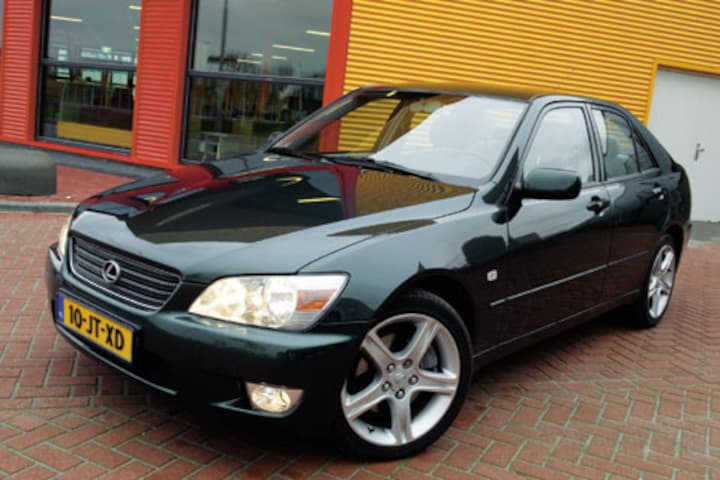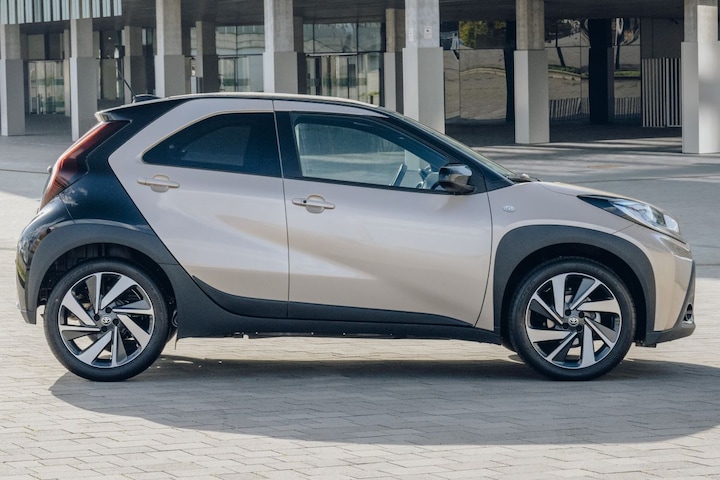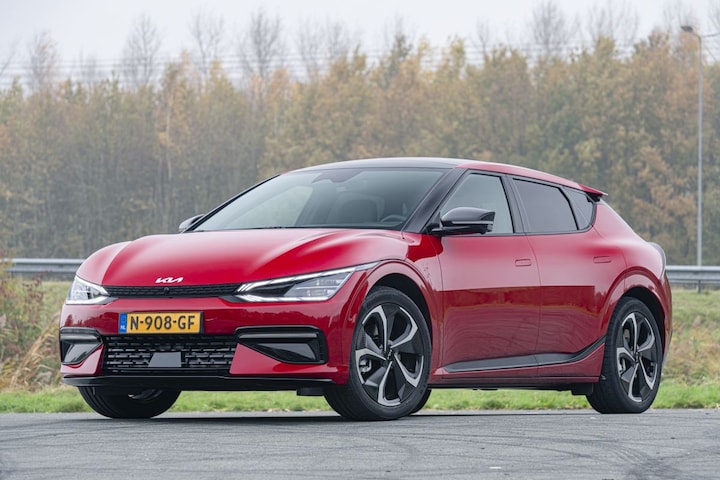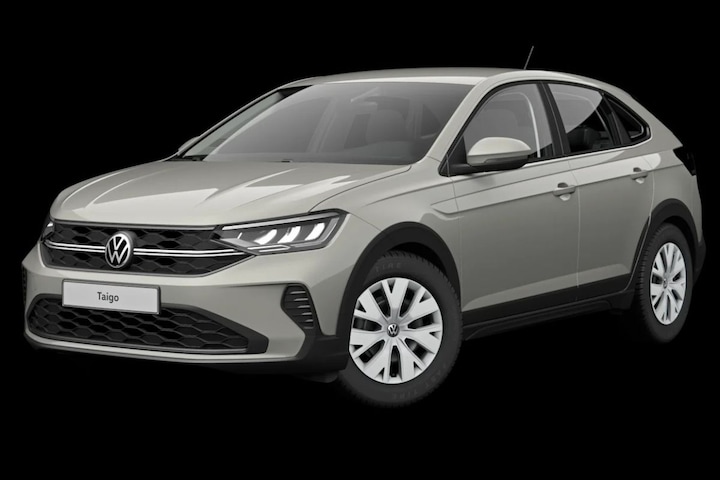The unstoppable advance of large light metal

For more and more cars, the largest wheel size is no longer big enough. We see less and less modest sizes and steel wheels with hubcaps are almost extinct. Those large wheels look very nice according to many, but are not without disadvantages.
The undersigned still remembers as if it were yesterday that the Lexus IS 200 appeared on the market. In the late 1990s, that sleek, squat sedan was impressive enough on its own, but the wheel size in particular has stuck with me. The smallest Lexus was standard on mud-fat five-spoke wheels with a diameter of no less than 17 inches. Unprecedented for that time, when a competitor such as the BMW 3 series still had to make do with 15-inch steel wheels with hubcaps as standard.

Even an Aygo X at 17 inches
We are now almost a quarter of a century further and the smallest and most affordable model in the Toyota family, the Aygo X, is 17 inches as standard. That Aygo is still an exception in its class, but it says a lot about how fast things have gone in wheelland. A standard, option-less Volkswagen Golf or Opel Astra went from 14 to 16 inches in the same period, while the Renault Clio saw its standard ‘shoe size’ climb from 14 to 15 inches. With the SUVs, the boundaries seem completely lost. A BMW X5 is already available with 22-inch wheels, the new XM even with 23.


Electric cars seem to be driving the trend rather than stopping it. With a Tesla Model 3, 18 inches is the minimum, with a Kia EV6 it is 19 inches. The smaller Kia Niro is available with 16 inches, but the fully electric Niro EV has at least 17-inch wheels. That is quite striking, because large wheels are usually a disaster for the range. A larger width means more rolling and air resistance, which you notice much faster with an EV than with a traditionally powered car. Even if the width remains within limits, larger is detrimental. After all, a larger wheel-tyre combination weighs more and that mass must all be set in motion.
Bigger wheel also has advantages
At the same time, a larger wheel also has advantages. For example, a wider and stiffer tire offers more grip and, according to many, larger wheels simply look better. That explains why concept cars, which after all do not have to drive (nicely), often have huge wheels. For production models, this is usually somewhat toned down, but modern cars often have much larger wheel arches than before. Those wheel arches need to be filled, and that is only possible with a good amount of inches. Steel wheels with hubcaps, as used to be the norm, are now almost extinct.

The new entry-level version of the Volkswagen Taigo, with steel wheels and caps.
No more steel wheels in the price list
About ten years ago, this solution for compact mid-sized cars was still the standard on the basic model, but in 2022 hardly any manufacturer dares to put the ‘sample’ on the price list. If they are available, in nine out of ten cases they are compact models from the A or B segment, of course in a simple version. Seat, for example, only offers steel wheels on the Ibiza and Arona. Successfully? No: inquiries show that in 2022 no more than 0.5 percent of the Seats delivered will be on steel wheels. And to think that part of it will undoubtedly receive bpm-free light metal immediately after delivery …
Big quality differences
Why apparently more and more people want to drive large light metal? Aad Hoogendoorn has the answer ready quickly: “Appearance, that is without a doubt the main reason for purchasing. You make your car more personal with it and that is exactly what people want.” Aad knows better than anyone that there is a large market for ‘aftermarket’ light metal. Through his company Hoogendoorn Wheels in South Holland, Zuidland, he has been involved in the sale of light metal since 1999. In addition, we can safely call Hoogendoorn a large-size specialist, because at 19 inches the average is considerably higher than at other ‘wheel shops’.

Even the ‘brave’ Volvo at 22 inches, or even bigger
Hoogendoorn benefits greatly from the trend and also sees that demand does not only come from the usual ‘fat German bins’. “Take Volvo. That used to be a brand for good general practitioners, people you never saw with us, but nowadays some models (the XC60 for example, ed.) are already standard at 22 inches.” At Hoogendoorn it can be even bigger if desired, up to 24 inches. That doesn’t make the Zuidland mechanics very happy, by the way: “You take it to a breaking point.” Does the wheel entrepreneur see any more disadvantages of those large sizes? Not really: “Compared to the real balloon tires of the past, you break such a large wheel sooner, but the difference between 18 or 19 inches does not matter much in that respect.” By the way, with a larger wheel you sacrifice a bit more when it comes to driving comfort, while cars often also become more sensitive to track.
Cheaper wheel more sensitive to damage, don’t take a counterfeit
Hoogendoorn cannot emphasize enough that one wheel is not the other. “There are wheels on the market that are better than original, but there is also a lot of junk being sold. A cheaper wheel can be an excellent solution for winter use, for example, but we always emphatically warn such a customer that the quality is lower.” This poorer quality is mainly reflected in a weaker material composition, which makes such a wheel much more susceptible to serious damage. According to Hoogendoorn, working with a specialist is always advisable for those looking for new wheels, because reviews on the internet do not always tell the whole story. He also has another tip: avoid replicas, i.e. imitations of original wheel designs. “Counterfeiting is now strictly prohibited, so the good brands have long since stopped doing that. What remains are shadowy brands that often deliver questionable quality.”
Everything can be repaired
If something goes wrong with a wheel, Hoogendoorn will resolutely refer you to a specialist who can take care of the repair. This is possible, for example, in Uden, at a company that is very appropriately called De Velgendokter. Henry van Eenbergen has been here for thirty years to repair all kinds of damage to light metal. This often involves curb damage, the inevitable scratch along the rim edge. You can also contact the repair company for more serious damage. Van Eenbergen: “Almost everything can be repaired, even if you have a big crack in your wheel, for example.” The ‘doctor’ also notices a significant difference in quality: “Straightening an original wheel from a renowned car brand costs our machines a lot of power, while you can almost bend a cheaper wheel from China, for example, by hand.” Increasingly larger wheels are also being used at Van Eenbergen, which leads to some back problems here. According to the entrepreneur, the fact that they do not see a direct connection with the amount of damage in Uden has everything to do with the other developments in the car world: “Cars nowadays have sensors and cameras everywhere and that helps to prevent damage. That said, the amount of damage is, was and remains very high.” Does De Velgendokter also work on ‘old-fashioned’ steel wheels? “Sometimes, but not often. Steel wheels are cheap, so in many cases it is better to simply replace them.”
Repairing a larger wheel also costs more
In many cases, determining the costs of a wheel repair requires custom work, says De Velgendokter. A tour of all kinds of specialists underlines this, although prices are sometimes mentioned. Straightening (rounding), welding, eliminating curb damage or powder coating can all start at around €50 per wheel, but prices vary widely per company and per damage. All specialists seem to have one thing in common: with a larger wheel, the repair quickly costs more money. This way ‘rolling on a big foot’ remains much more expensive even after purchasing that wheel, although it looks very nice.
– Thanks for information from Autoweek.nl